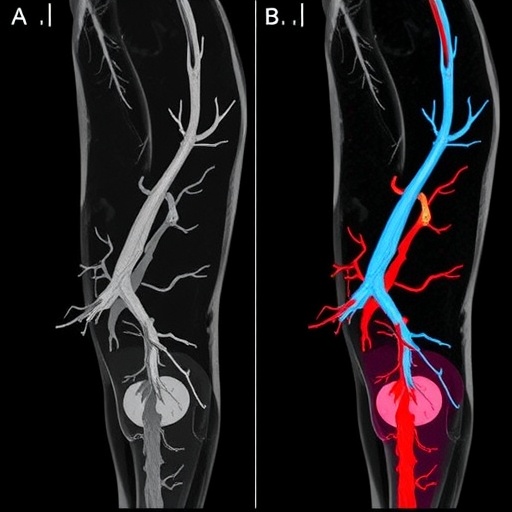In a recent study, researchers Weiss, Varisco, and Pytell delve into the pressing question of how to effectively increase treatment accessibility for Alcohol Use Disorder (AUD) within primary care settings. Alcohol Use Disorder is a pervasive issue affecting millions worldwide, often overlooked in primary care environments. The team advocates for a multi-faceted approach that integrates various healthcare professionals, thereby enhancing the likelihood of successful interventions and improving patient outcomes. This article explores the fundamental ideas presented by the authors and emphasizes the significance of teamwork in tackling such complex health issues.
One of the core challenges identified in the research is the fact that many primary care providers lack the specific training and resources required to manage AUD cases effectively. Traditional training paths often overlook substance use disorders, leading to a significant knowledge gap among physicians. The study stresses the importance of equipping healthcare professionals with the necessary skills and understanding of AUD to facilitate better identification and management of this condition. By ensuring that physicians understand how to recognize the signs of alcohol misuse and are familiar with evidence-based treatment options, primary care can become a pivotal point of intervention.
Moreover, the authors highlight the necessity of a collaborative approach. Involving a diverse team of healthcare professionals, including psychiatrists, social workers, and addiction specialists, can create a more comprehensive support system for patients dealing with AUD. Each member of the team can contribute distinct insights and strategies, which, when combined, offer a more rounded approach to treatment. This collaboration has the potential not only to enhance the care that patients receive but also to reduce the stigma often associated with seeking help for alcohol-related issues.
The study also points to the role of technology in bridging the gap in care for individuals with AUD. Telehealth services and mobile health applications represent significant advancements in making treatment more accessible. With the increasing integration of digital tools into healthcare, individuals can receive tailored support from the comfort of their homes. This innovation is particularly vital in rural areas, where access to specialized services may be limited. By harnessing technology, the authors argue, there is an opportunity to reach a broader audience and engage patients in their recovery journey more effectively.
Engagement strategies are crucial in this context. Effective communication methods must be formed to connect with patients and encourage them to seek treatment. The study reveals that patients often feel isolated in their struggles, so outreach programs that promote understanding and compassion are critical. By building trusting relationships, healthcare providers can motivate patients to enter treatment and remain committed to their recovery. This relational aspect underscores the necessity for medical professionals to possess not only clinical knowledge but also strong interpersonal skills.
Additionally, the research outlines the importance of continuous education and training within primary care practices. Regular workshops and training sessions can keep healthcare providers updated on the latest research findings, treatment methodologies, and support mechanisms related to AUD. This ongoing education is vital for maintaining a knowledgeable staff capable of addressing emerging trends and challenges in the field. As the understanding of AUD evolves, so too must the strategies employed by healthcare professionals.
The study also emphasizes the need for structured treatment pathways that can be implemented across various primary care settings. Standardized protocols would ensure that patients receive consistent care and that their treatment plans are evidence-based. These pathways should include clear assessment tools, referral procedures, and follow-up strategies to monitor patient progress. By establishing a systematic framework, primary care providers can not only enhance the quality of care provided but also streamline the treatment process.
Furthermore, the research discusses the financial barriers that often hinder the treatment of AUD in primary care. Many patients do not seek help due to concerns about costs or lack of insurance coverage. Therefore, the authors advocate for policy changes that would allow greater access to affordable treatment options. This could involve pushing for legislative support that expands insurance coverage for AUD treatments and increases funding for related healthcare services. By addressing these financial barriers head-on, a more equitable approach to care can be fostered.
It is also essential to consider the role of families and support networks in the recovery journey. Often, loved ones can play a critical role in encouraging individuals to seek help for their AUD. The study indicates that involving family members in the treatment process can lead to better outcomes. By providing education and resources to families, healthcare providers can create a support system that extends beyond the clinical environment, fostering a more holistic healing process.
As the study reflects on the potential impact of community resources, it becomes clear that local support systems are invaluable for those dealing with AUD. Community-based programs, such as support groups and educational sessions, can significantly enhance the treatment landscape. By promoting local initiatives, primary care providers can connect patients with essential resources and services that improve their ability to manage their condition in the long term.
In summary, the research by Weiss, Varisco, and Pytell sheds light on the intricate layers of treatment for Alcohol Use Disorder within primary care. Their findings unequivocally demonstrate that a team-based approach, enhanced education, the integration of technology, and community resources are paramount in effectively managing AUD. As we move forward, the insights gleaned from this study will be pivotal in shaping a future where individuals struggling with alcohol use receive the comprehensive care and support they deserve.
By fostering an environment of collaboration, innovation, and empathy, primary care can emerge as a frontline defender in the battle against Alcohol Use Disorder. The implications of this research are profound, calling for a systemic change that not only improves patient outcomes but also promotes a healthier society. Addressing Alcohol Use Disorder in primary care is not just a matter of treating a condition; it is about transforming lives and nurturing well-being across communities.
Subject of Research: Alcohol Use Disorder Treatment in Primary Care
Article Title: How Do We Increase Treatment for Alcohol Use Disorder in Primary Care? It Takes a Team.
Article References: Weiss, J., Varisco, T., & Pytell, J.D. How Do We Increase Treatment for Alcohol Use Disorder in Primary Care? It Takes a Team. J GEN INTERN MED (2025). https://doi.org/10.1007/s11606-025-09939-z
Image Credits: AI Generated
DOI: 10.1007/s11606-025-09939-z
Keywords: Alcohol Use Disorder, Primary Care, Treatment, Collaborative Approach, Telehealth, Community Resources, Patient Engagement.
Tags: addressing addiction in primary care settingsalcohol use disorder treatmentchallenges in primary care for AUDenhancing treatment accessibilityevidence-based treatment for alcohol usehealthcare professional training for AUDimproving patient outcomes in AUDknowledge gaps in substance use disorder trainingmulti-disciplinary approach to substance useprimary care integration strategiesrecognition of alcohol misuse signsteamwork in healthcare interventions





